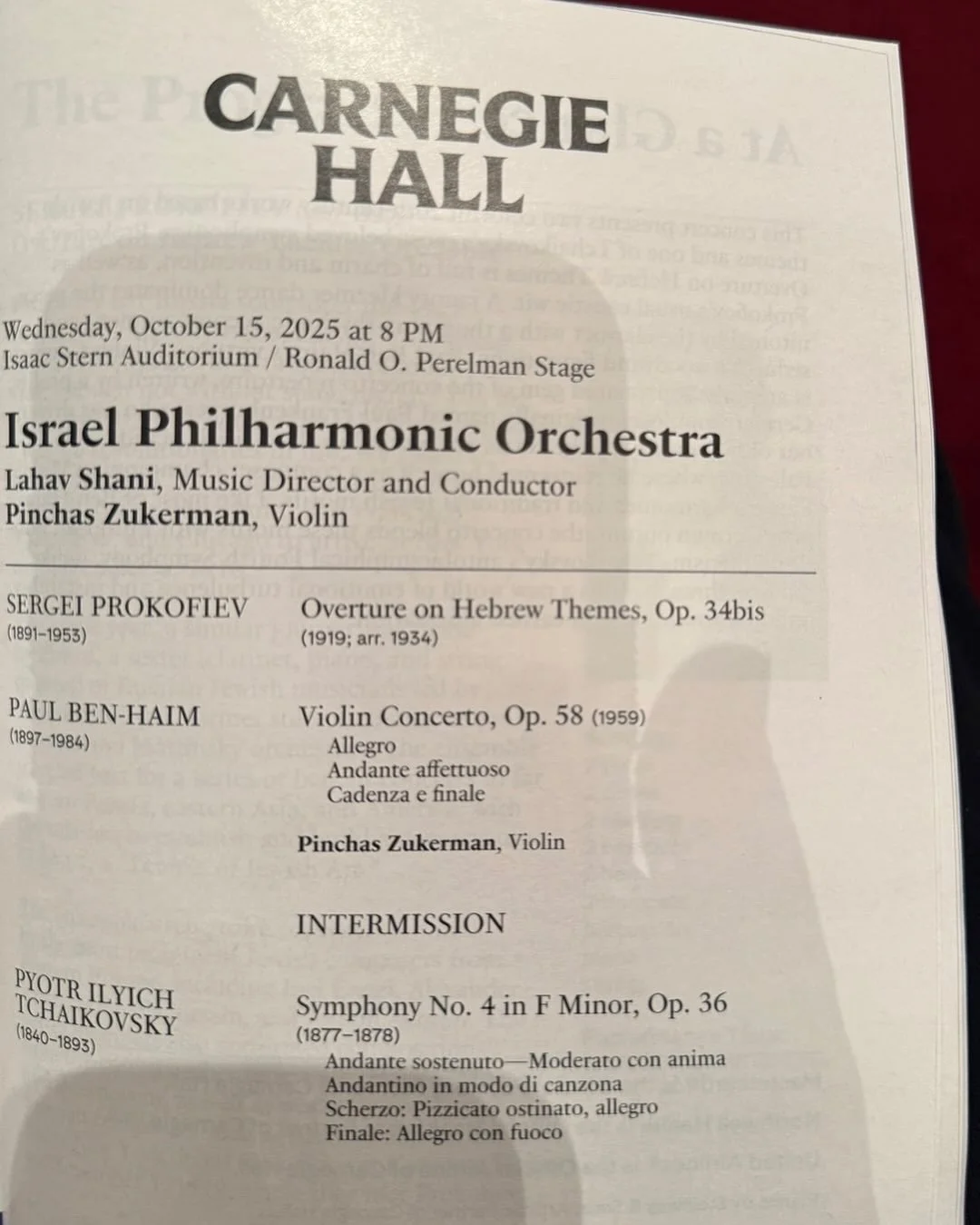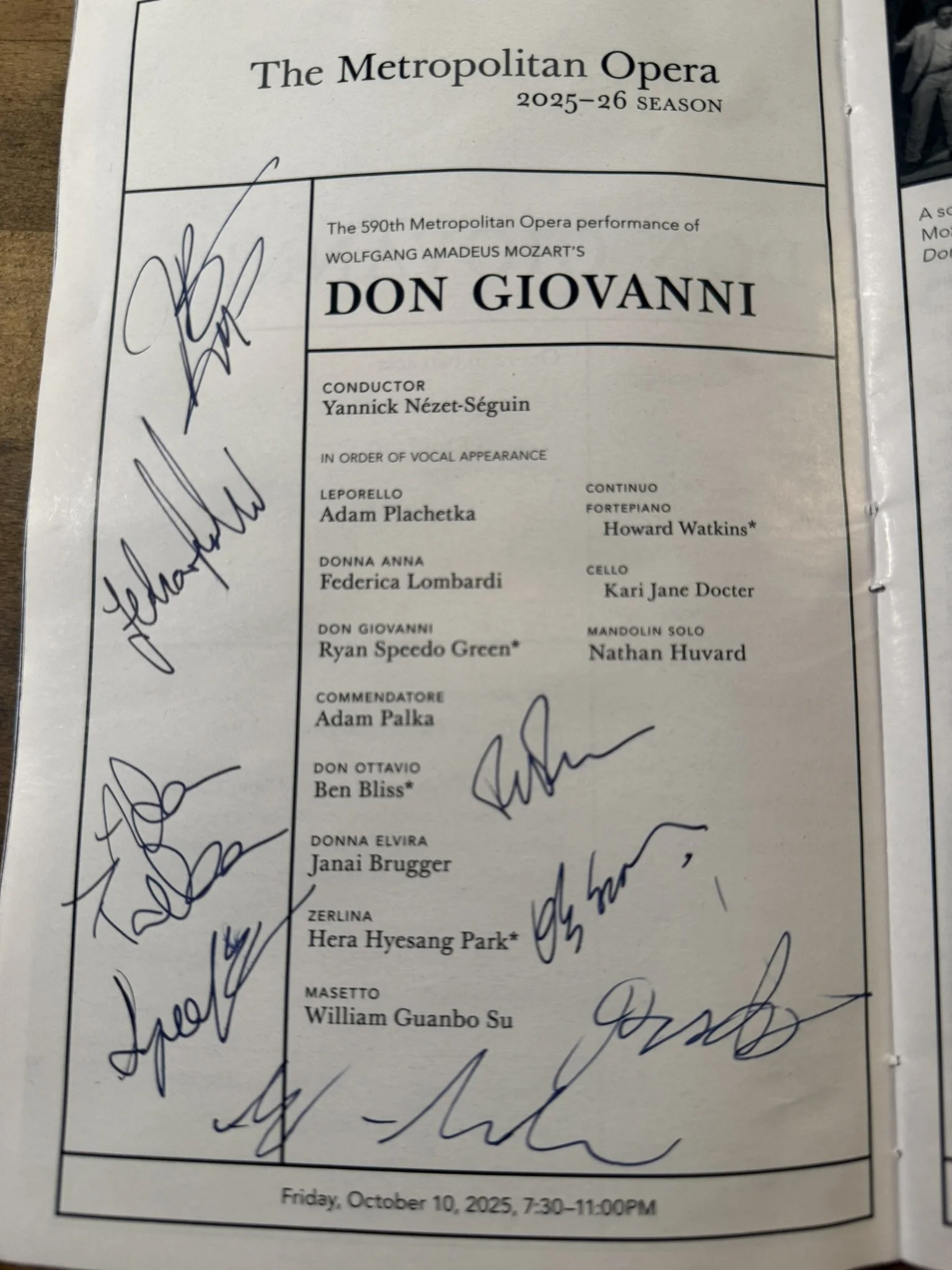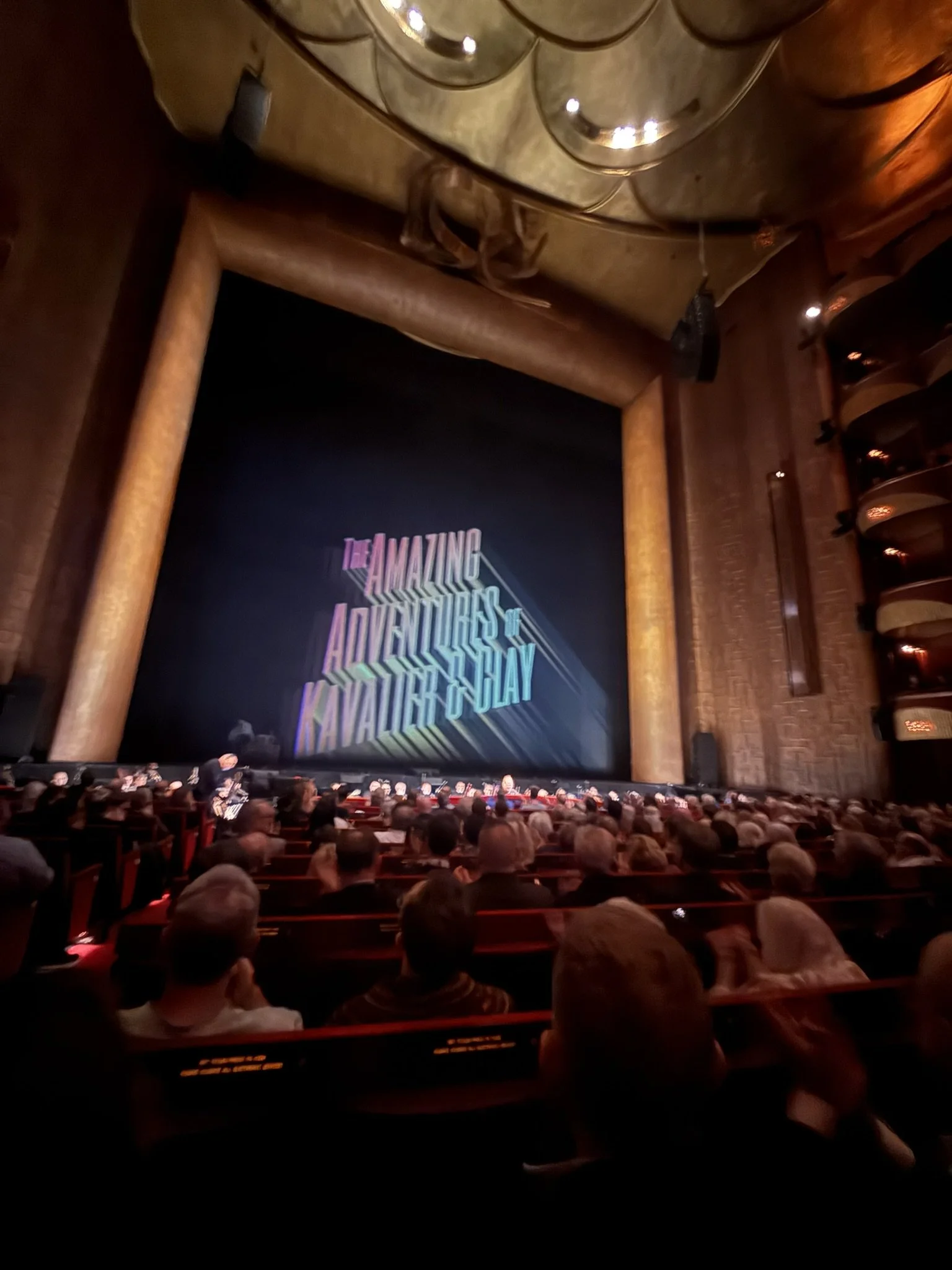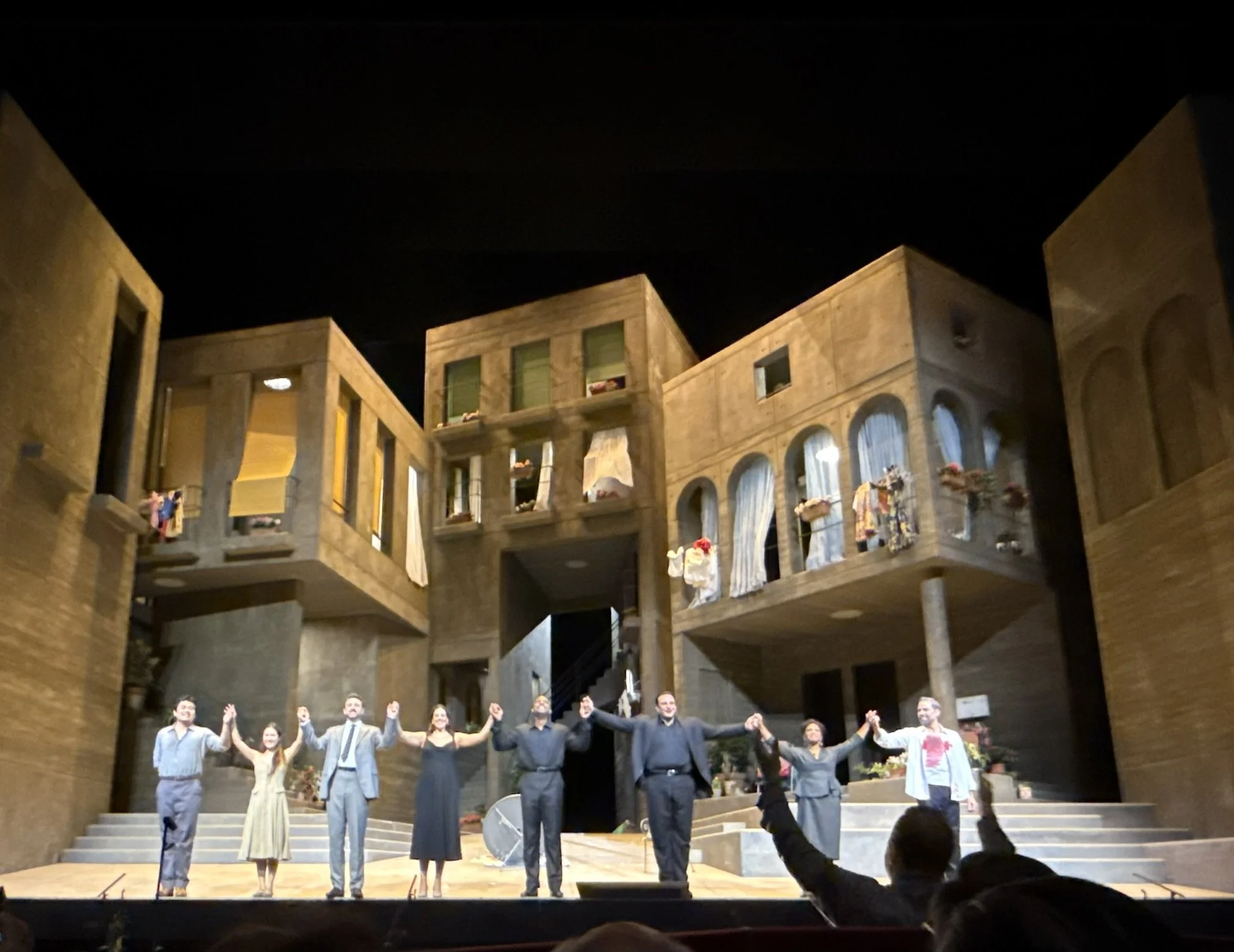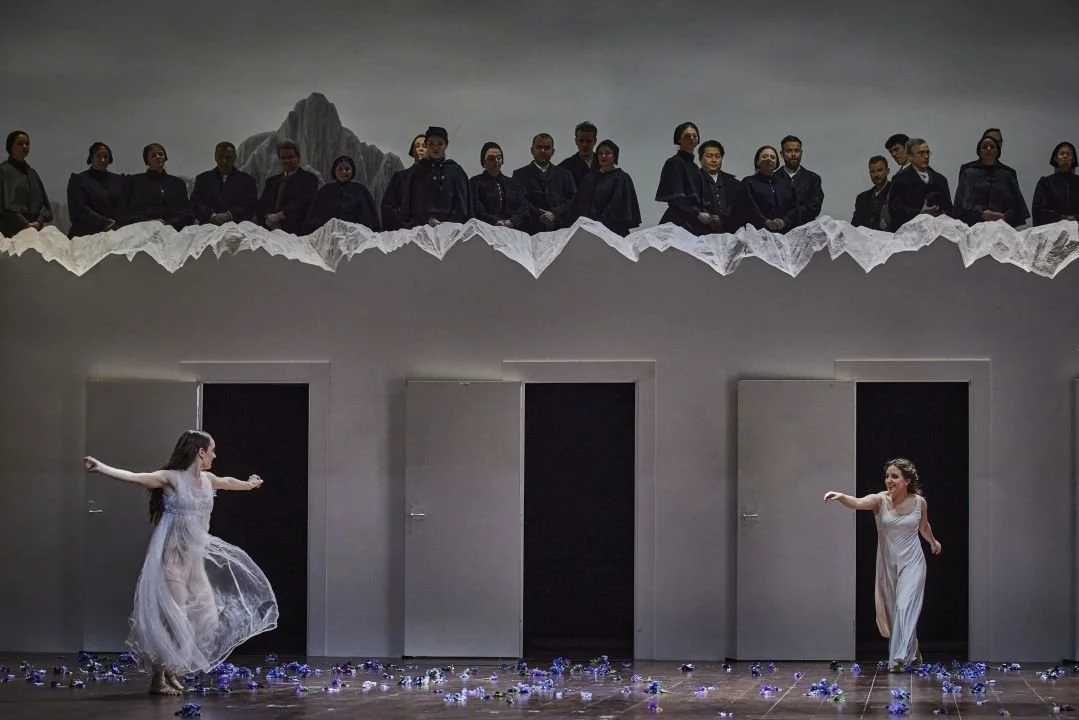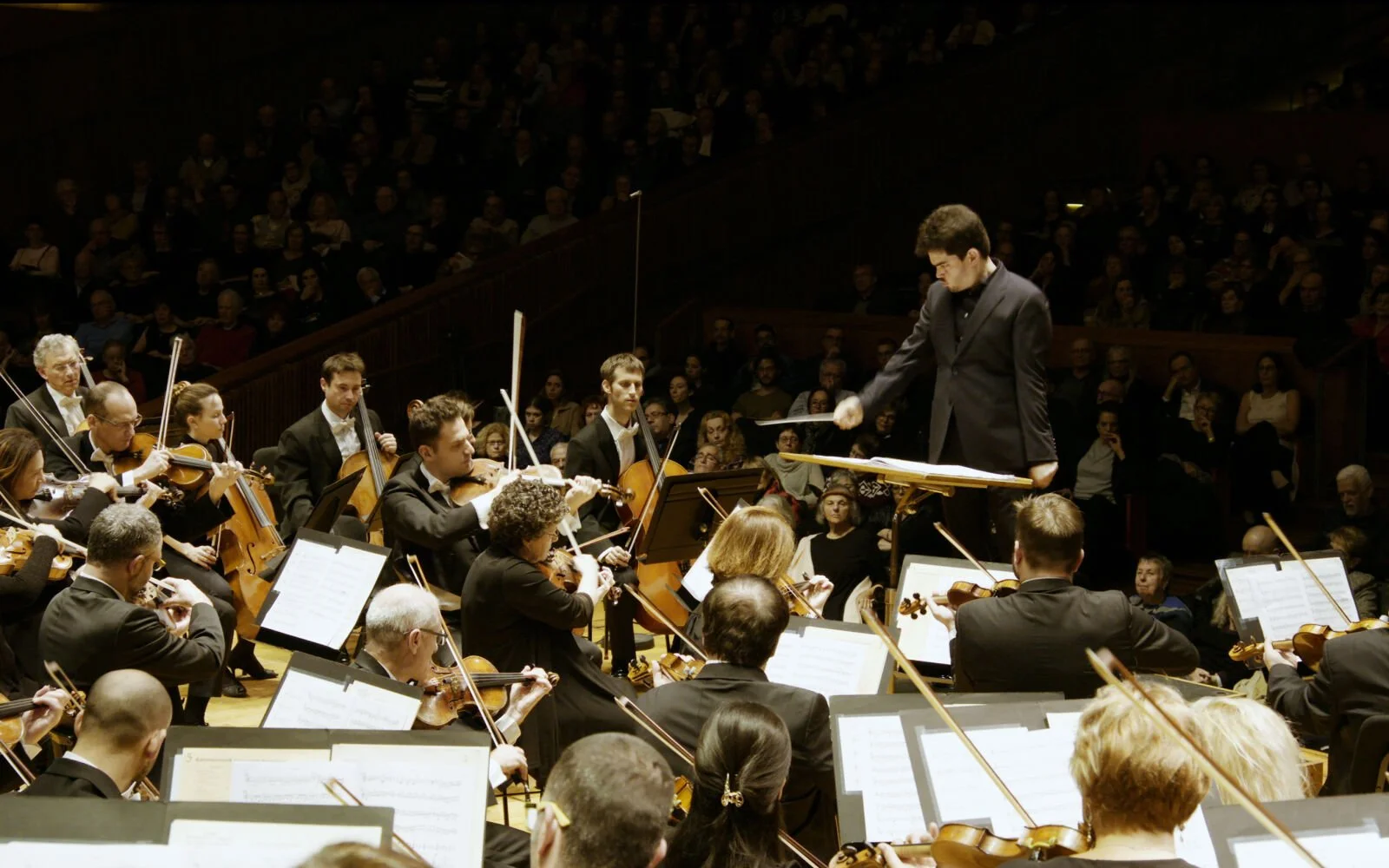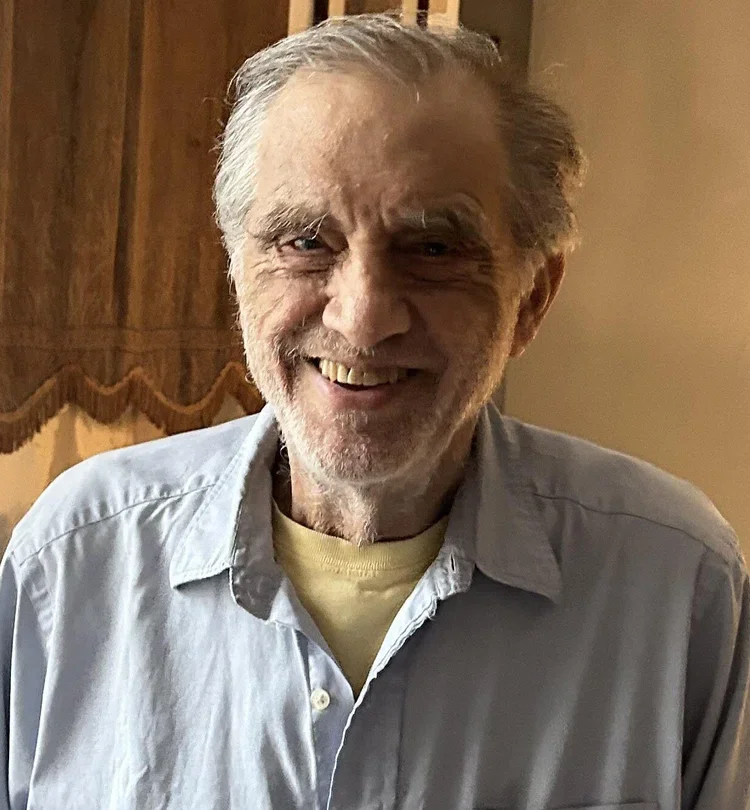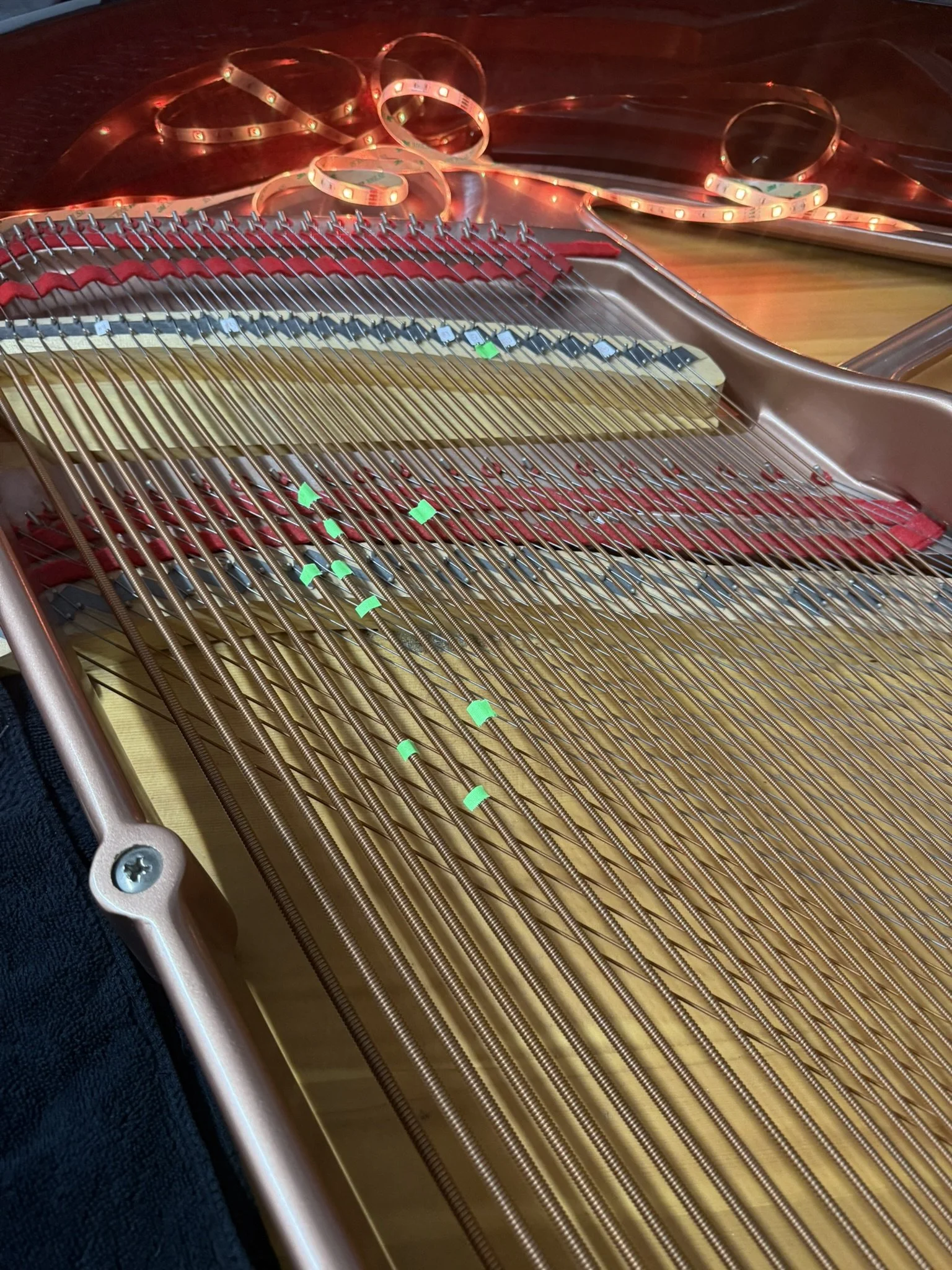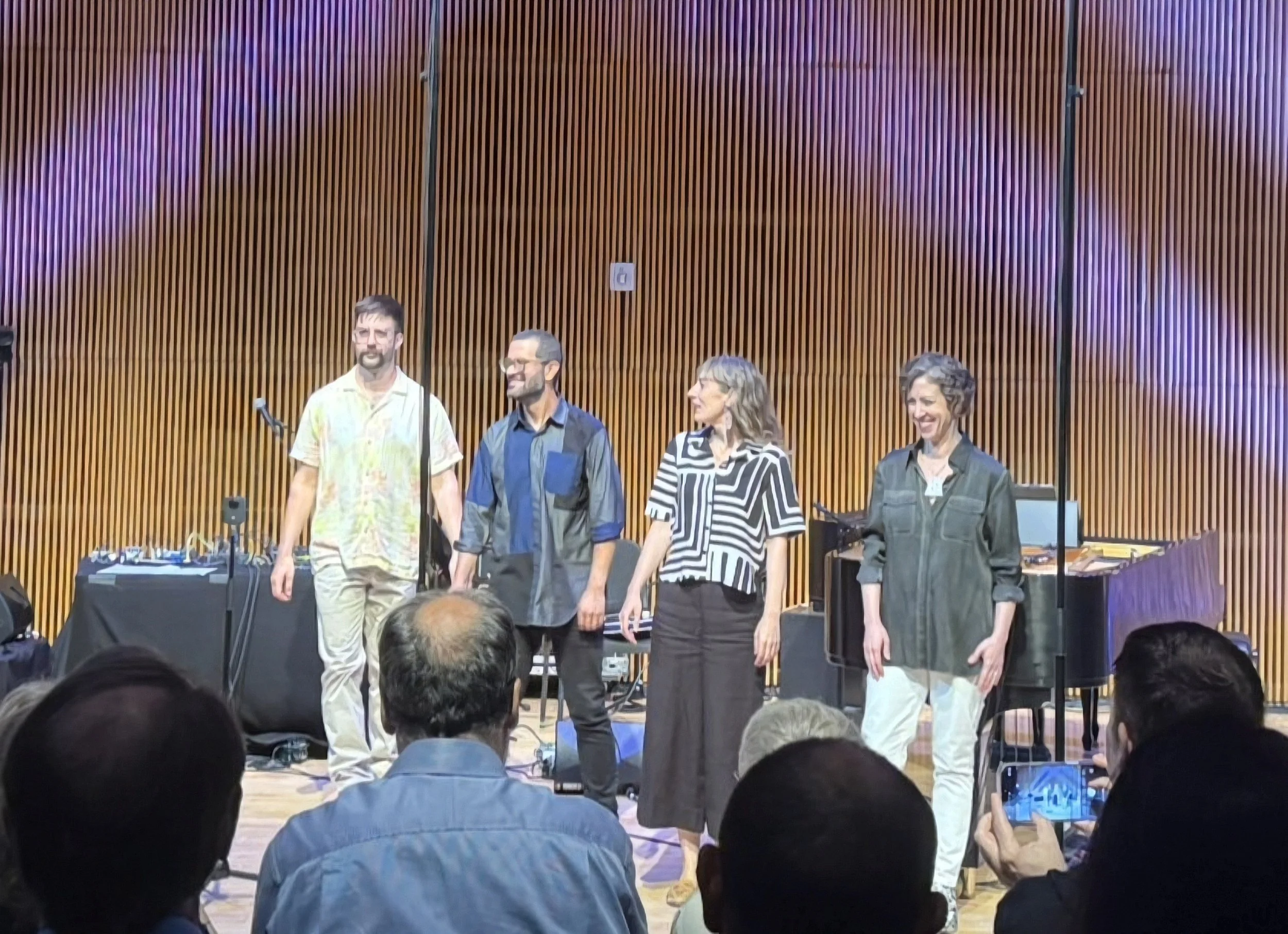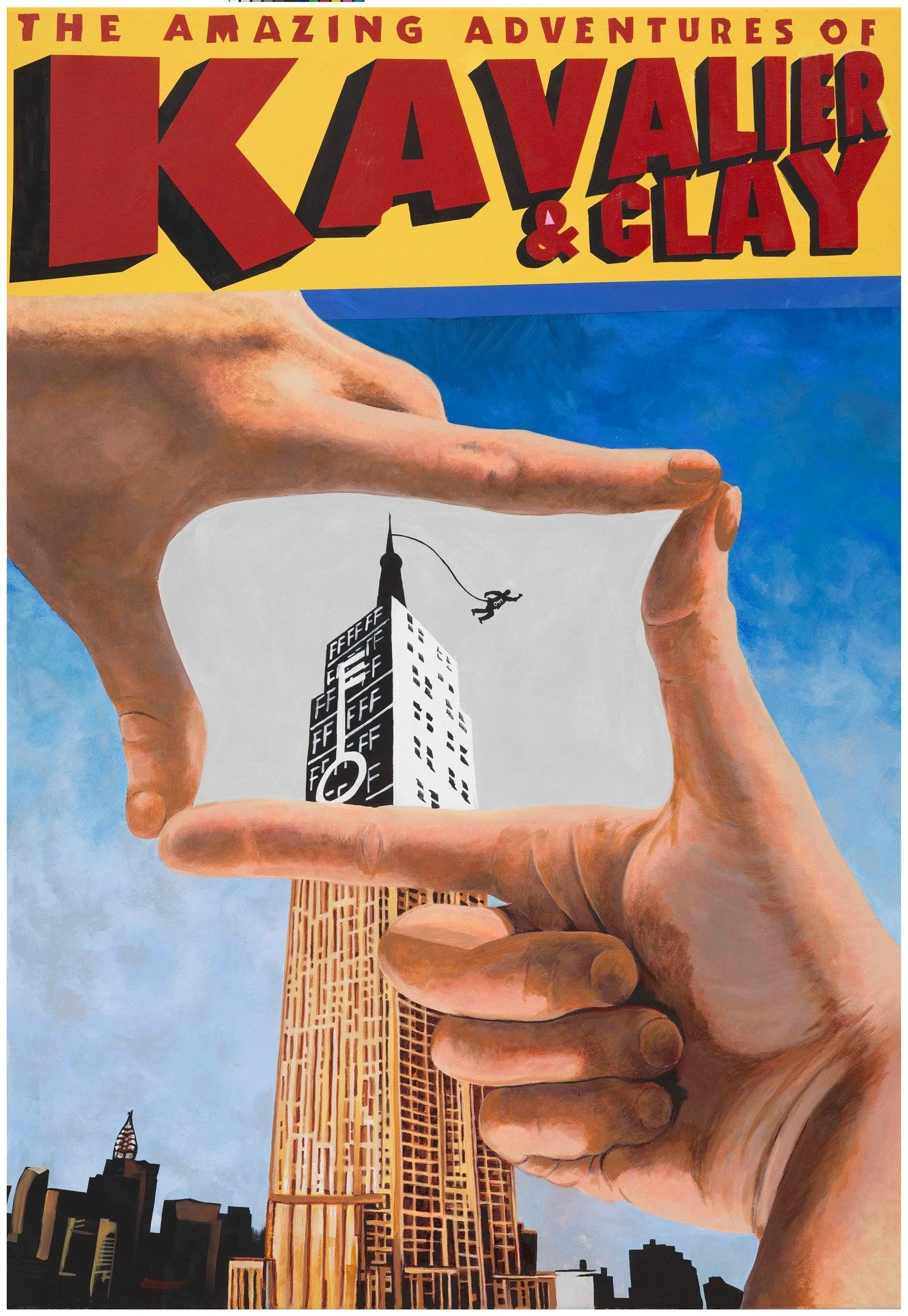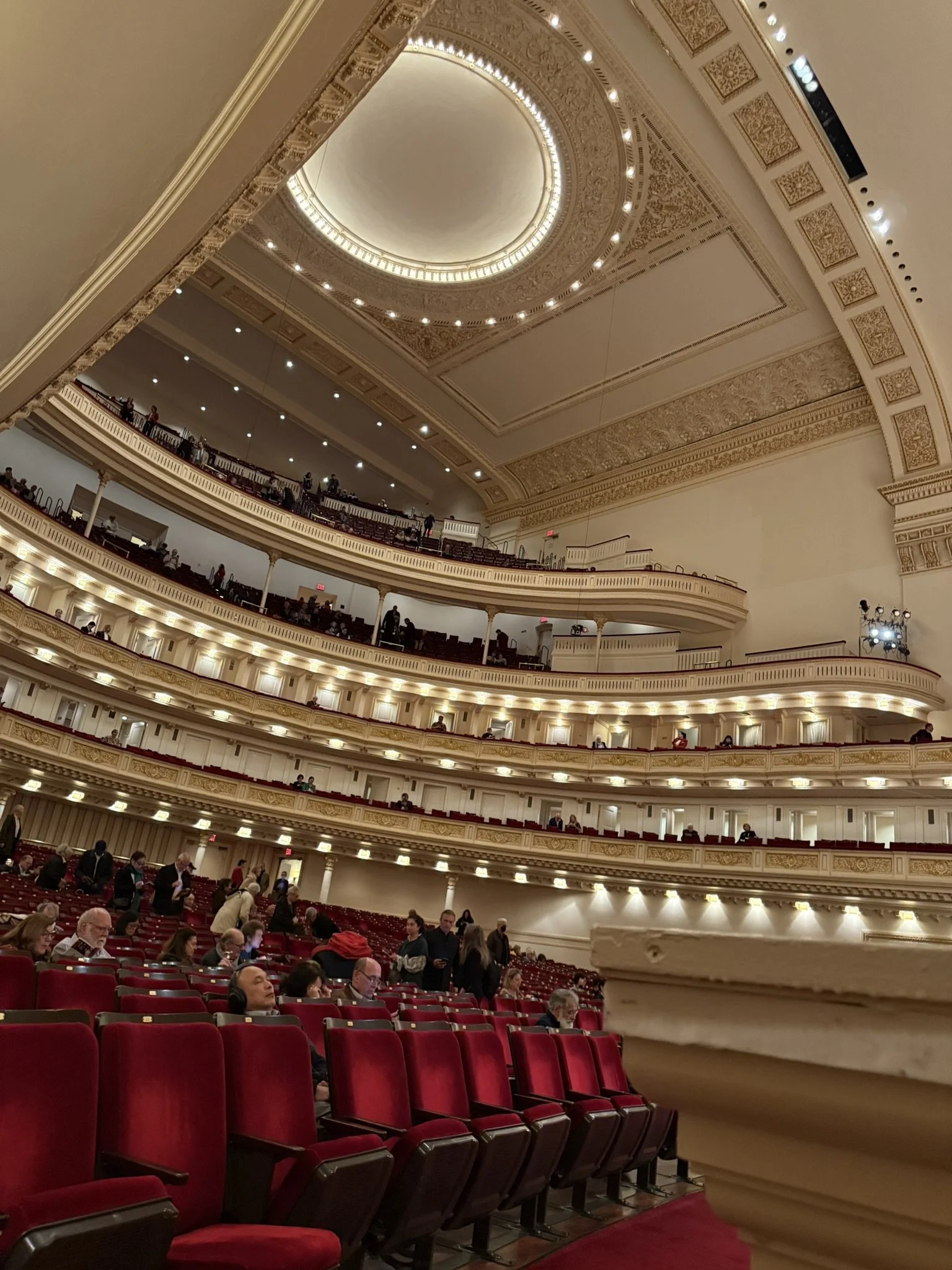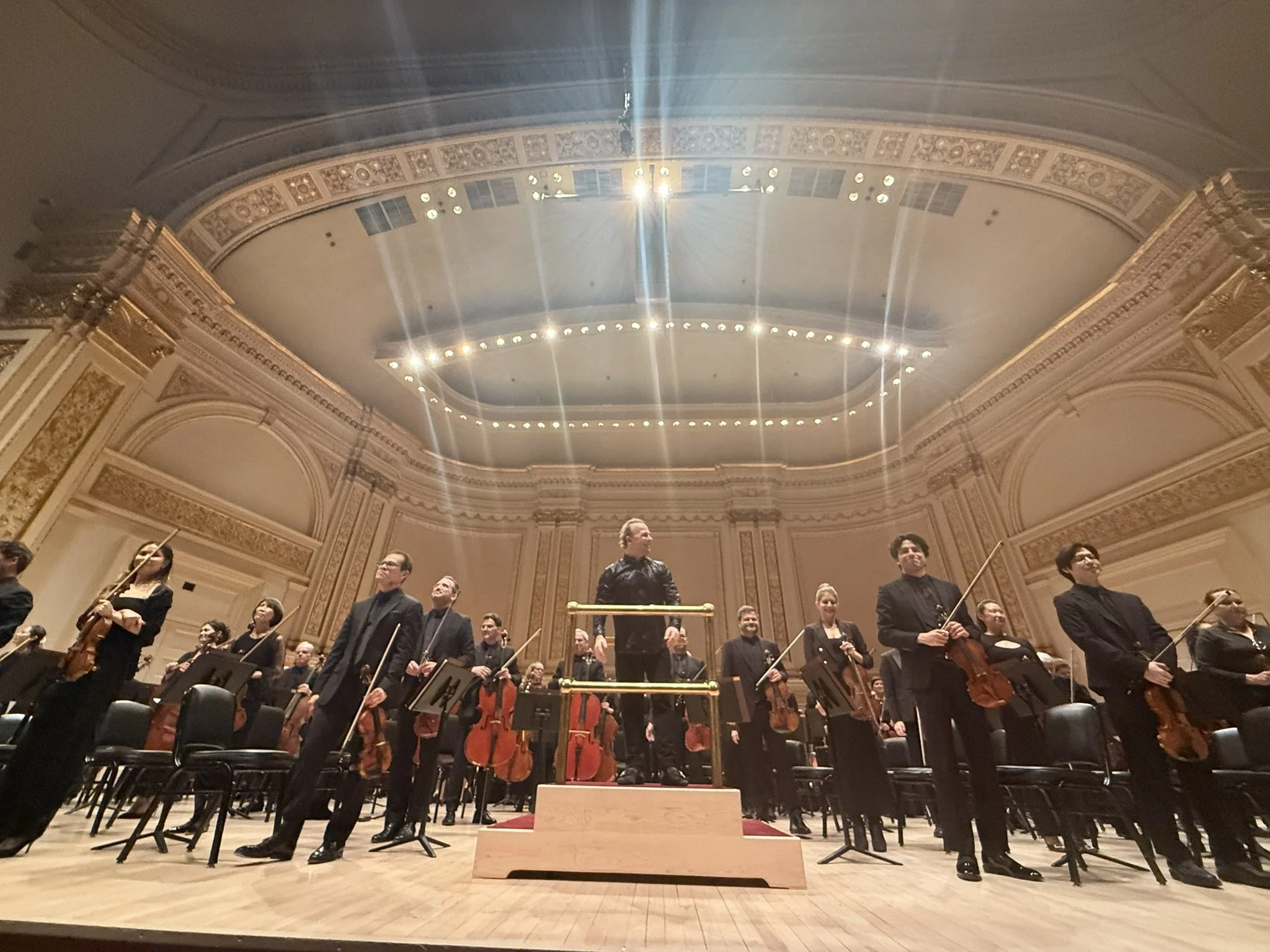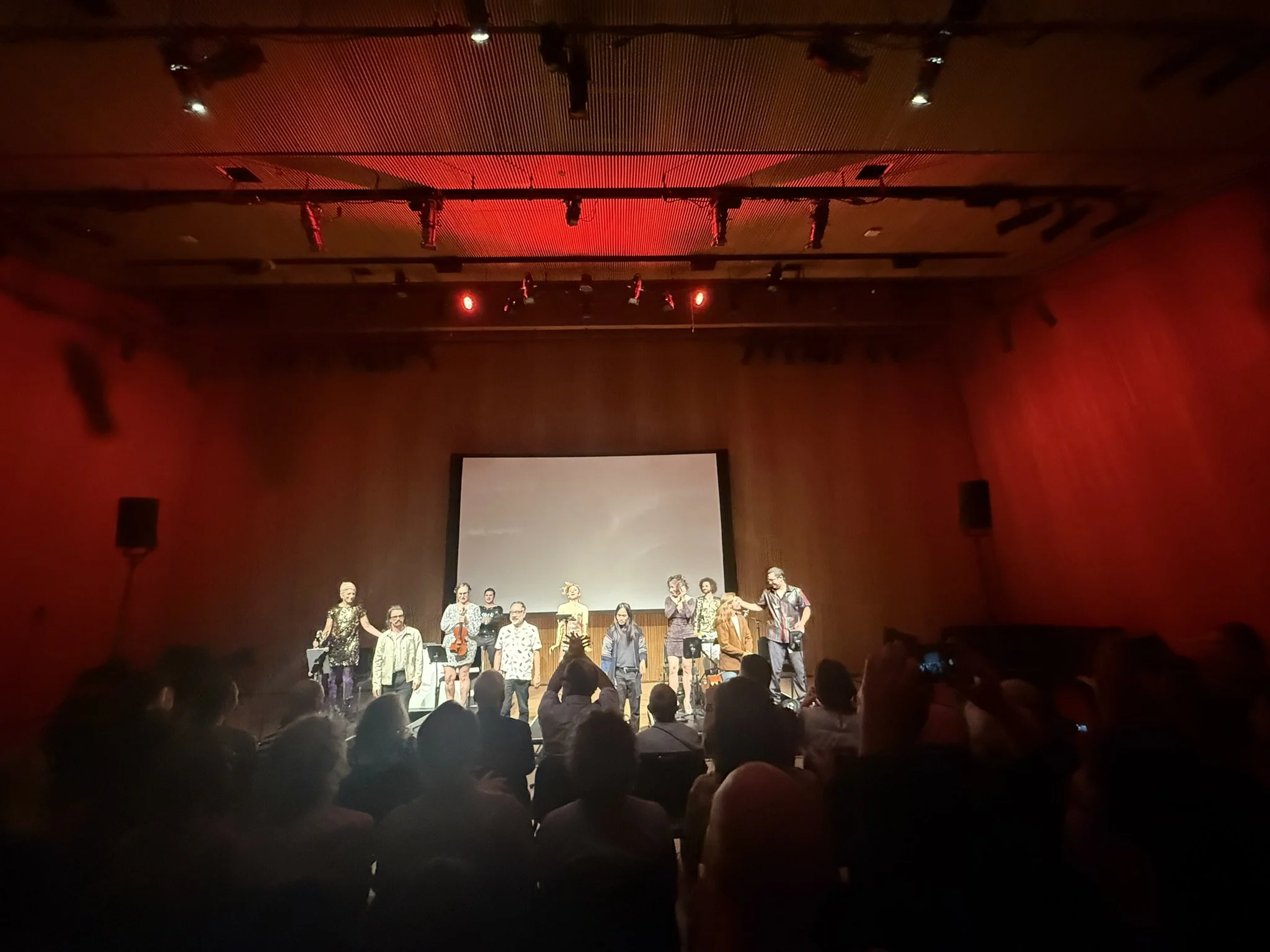The Israel Philharmonic Orchestra and Lahav Shani’s second Carnegie Hall concert on October 16, 2025, opened with Bernstein’s Halil (1981), a haunting memorial to a young flutist killed in war. Principal flutist Guy Eshed’s faint singing and scraping sounds intensified the music’s atonal and tonal shifts, evoking Hindemith, Berg, and postwar American composers, blending menace, hope, and prayer. A silent tribute followed the final non-vibrato flute note. Ben-Haim’s Symphony No. 1 then burst forth with Wagnerian power in the strings, revealing Mahlerian structure infused with Yemeni prayers, marches, and oriental rhythms. The lyrical second movement recalled Adagietto, while a lively tarantella showcased violist Dmitri Ratush’s dark tone. Tchaikovsky’s Symphony No. 5 closed the evening with a heavy, lingering opening and surging brass power, as Shani led the orchestra through intensifying repeated themes, building to a feverish, triumphant finale.
Read MoreIsraeli and Shani at Carnegie Hall
The Israel Philharmonic and Lahav Shani at Carnegie Hall on 10.15.2025. Each one, thoroughly prepared and crafted with exquisite attention to detail, was an absolute joy. This is not only their deep understanding of the music, of the conductor, and of each other, but also the sense that they must exchange ideas, sometimes even clash, and ultimately build something together. I felt that they all spoke the same language, no matter what they were playing. All was playing for the others, and everyone was playing for one.
Read MoreAutographed by from left top, Janai Brugger, Federica Lombardi, Adam Palka, Ryan Speedo Green, right top, Ben Bliss, Hera Hyesang Park, Benjamin Bowman, and Milan Milisavljević
Met Don Giovanni 6th
I saw the 6th performance of Don Giovanni at the Met. Compared to the first performance, the orchestra’s more polished, period-informed approach felt intimate, light, and like a playful conversation. Against this backdrop, the singers’ refinement and subtle humor allowed Mozart’s modernity to shine at the Met. From beginning to end, the music was alive—overflowing with vitality. The texture of the orchestra’s sound was completely different when the Commendatore was alive versus after he was killed. The orchestra masterfully distinguished between a human brimming with life and one on the verge of death. When I focused on the singers, the orchestra’s sound came through even more vividly.
Read MoreCrystal resonance, Chelsea Knox, Flute at Met Oprchestra on 1st La Sonnambula.
Villazón’s La Sonnambula
Rolando Villazón’s production depicts the village as strict and repressive, using minimalist sets and Alpine projections to contrast Amina’s sleepwalking freedom with societal pressures when awake. Nadine Sierra skillfully portrayed both her liberated and vulnerable sides, while the orchestra mirrored this with bright string tuttis for waking scenes and ethereal textures for dreamlike moments, emphasizing Amina’s innocence and marginalization.
Read MoreHung on! Met Opera's active speaker
Mason Bates hung speakers from the ceiling of the world’s largest opera house, which convinced someone who had enjoyed Detroit, German techno, or other electronica that a fine symphonic experience was the event. The sound filled the vast space of the Met. Met orchestra, including Wagner tubas, was layered with electronics. Speakers were positioned on both sides of the stage and from the ceiling, blending electronic sound as if to create a new species, resonance, and power in the orchestra. Whereas I usually find PA effects distracting, they were intricately integrated. For someone like me, who has enjoyed both classical and electronic music, it was a new sensation to experience The Amazing Adventures of Kavalier & Clay at the Metropolitan Opera.
Read MoreMusic Talks / Don Giovanni at Met
Mozart’s masterpiece comes vividly to life. Emotion infused the score, where even a sigh became music, and the Met orchestra and singers revealed the complexity of human ties. Yannick Nézet-Séguin let Mozart’s voice emerge freshly, alive with individuality and truth.
Read MoreTrema, trema, o scellerato! / Don Giovanni
The final scene of Act 1 of Don Giovanni. The women who have been deceived raise their voices: “Tremble, you villain! lightning bolt will strike above your head!”— leading into Act 2.
Read MorePhoto: https://proopera.org.mx/ Nadine Sierra as Amina
La Sonnambula / Bellini's Melody
Bellini is a poet of melody. He places long, flowing lines over a restrained orchestra, expressing emotions and psychology to their utmost depth. La sonnambula (The Sleepwalker) exemplifies this, with its melodies conveying both narrative and the subtleties of feeling.
Read MoreBellini, the melody / Donizetti, the drama at Met Opera
Met Opera will present Bellini and Donizetti, 19th-century Italian. Bellini was a poet of melody, writing long, flowing lines over a restrained orchestra to express emotion and psychology to the fullest. La sonnambula (The Sleepwalker) exemplifies his style, where the melody drives the story and conveys lyricism and psychological depth. Donizetti, by contrast, was prolific across comedy and tragedy, blending melodic beauty with dramatic development and insight, condensing the flow of the story into the music. In La fille du régiment (The Daughter of the Regiment), he skillfully uses coloratura, choruses, and modulations to vividly depict comedic situations and romantic conflicts, merging melody and drama. After savoring Bellini’s poetic melodies, audiences can enjoy the theatrical drama that Donizetti created a decade later.
Read MoreUnity and Universality: Israel Phil and Shani Dedicate Ben-Haim to Carnegie Hall
The Israel Philharmonic, born out of persecution and exile, dedicates a performance of Ben-Haim’s works, conducted by Lahav Shani, at Carnegie Hall. Ben-Haim masterfully integrated the musical traditions of different Jewish communities into Western structures, achieving a refined and richly expressive synthesis of ethnic elements.
Read MoreInward Journey by Philip Ellis Foster
Although the sound directions are random, each line of notes continues at regular intervals. Each line repeats small crescendos and decrescendos, and while composed of limited elements, the notes are placed with high precision yet randomly. Double stops make me perceive two distinct characters, and the harmonics follow a consistent pattern. As these sound lines pass through, the combination of scattered notes and the regularity of the harmonics prevents any sense of déjà vu in thought, dissolving tension and expectation, and creating a natural space and quiet openness in the mind. This is healing for the heart and discipline for the mind that cleans up my brain trash.
音の方向はばらばらでありながら、それぞれの音のラインは一定の間隔で続く。各ラインは小さなクレッシェンドとデクレッシェンドを繰り返し、要素は少ないが、音は高い精度で、かつランダムに配置されている。ダブルストップをかけると、音から二つの異なるキャラクターを同時に感じることができ、ハーモニクスには一定のパターンが存在する。こうした音のラインが自分の中を通り過ぎると、ばらばらに置かれた音と規則的なハーモニクスの組み合わせによって思考に既視感は生まれず、緊張や期待が解け、心に自然な余白と静かな開放感が生まれる。それはまるで脳にたまったごみを取り除いてくれるような感覚。この方の近くにいると気配に圧倒される。気取りがなくユーモアに溢れ、しかしとても厳しい目で、温かく作品を眺めたり楽しんだりしている。
"Inward Journey" by Philip Ellis Foster, performed by the JACK Quartet
Recommended work : C-A-G-E-D
The house of contemporary, Yarn/Wire’s Bushwick studio.
On the way there, Mäkelä’s Berlioz is playing in my head. Yarn/Wire’s studio in Bushwick, Brooklyn, where they've been fifteenth year. The program began with Igor Santos’s living to fall [music and rain]. As fragments of video unfolded alongside live sound, the consciousness of the four performers made the images—rain, shattering glass—appear vividly.
Read MoreMet’s Don Giovanni, or Yourself
Even you rely on laws and rules for your protection, yet establish your freedom at the expense of others, this opera is for you. Because you will see yourself reflected in the human nature that Mozart portrays. Conductor Yannick brings difficult classical music to life in an accessible, discovery-filled way, revealing your treasure. Director Hove drives a wedge into your hardened heart, using the interplay of power and redemption to enhance the music. Now, let us go witness the filth of humanity that thrives in every age.
Read Moreclassicasobi 2025-2026
The season features new American operas and performances by major orchestras from Chicago, Boston, Philadelphia, New York, and Cleveland at venues such as Carnegie Hall, the Metropolitan Opera, and David Geffen Hall. The Juilliard Orchestra, Juilliard 415, Gidon Kremer, and the Budapest Festival Orchestra, Klaus Mäkelä, Andris Nelsons, Yannick Nézet-Séguin, Erin Morley, Louise Alder, Lise Davidsen, Joyce DiDonato, Asmik Grigorian, and Rosa Feola plan to come.
Read MoreLIVE FROM TROUTMAN Yarn/Wire, Sarah Davachi, Igor Santos
The latest works by Canadian composers Sarah Davachi and Igor Santos at Yarn/Wire’s studio in New York. Davachi’s Feedback Studies for Percussion (2022) creates a meditative soundscape using percussion and feedback, minimizing melody and rhythm while exploring resonance and overtones. Performers do more than follow the score, shaping sound in response to the acoustics, immersing listeners in the subtle shifts and flow of time. Santos’ living to fall [music and rain] (2022) blends sound and visual media around the theme of water, employing piano, keyboards, percussion, and visuals to evoke thunder and rain, symbolizing both violence and healing. Yarn/Wire delivers precise and expressive performances of both works, offering a profound encounter with the possibilities.
Read MoreKavalier & Clay Met Opera Guide
If one listens closely, the orchestration’s structure, the thematic content of each scene, and the musical context emerge, revealing the composer’s intentions. Moreover, the ingenuity of the librettist and production team, the conductor’s interpretation, and the performers’ expressiveness also become apparent. Why was a particular instrument assigned to a specific scene? Why does bassoonist Billy’s tone always shine so brightly, producing textures entirely different between Dead Man Walking and familiar Italian opera? Why is the Maroon unison always precise? Why is Silvio’s timing and reed work on the clarinet impeccable? Why can Yannick infuse infinite emotion into the violin tutti? The answers are evident when you watch.
Read MoreLabor Day long talk
—“A continuous effort to illuminate the fragile, ever-evolving human form.”
It is a landscape I have been observing myself in. I remembered August 4th, the day tickets for Carnegie Hall went on sale—a launch day for boarding the “time machine” that spans three venues of the world. At the head of the waiting line were the usual Russian ladies.
Read More2025 Concerts
Attendance that were not in my previous reviews, including Aida at Met Opera, Nina Stemme, Soprano, and Roland Pöntinen, Piano, at Carnegie Hall, Juilliard415 and Lionel Meunier, Pierre-Laurent Aimard, Piano at Carnegie Hall, Antony and Cleopatra at Met Opera, Evgeny Kissin and Friends at Carnegie Hall, Wagner’s Tristan and Isolde, Yannick Nézet-Séguin at the Philadelphia Orchestra.The Met Orchestra at Carnegie Hall
Read MoreTIME:SPANS 2025
Attended four concerts at the 2025 TIME:SPANS Contemporary Music Festival in NYC, featuring Ensemble Nikel, Christopher Trapani, Bekah Simms, and more, showcased cutting-edge sound art and offered a glimpse of the present and future of global contemporary music.
Read MoreFrom the left, Lori Freedman (Bass Clarinet), Gabriel Dufour-Laperrière (Sound Engineer), Geneviève Liboiron (Violin), Daniel Aniez García (Piano), Steven Kazuo Takasugi (Musical Direction), Sarah Albu (Soprano), Huei Lin (Video Artist), Emilie Girard-Charest (Cello), Noam Bierstone (Percussion, and production leader), Jeff D’Ambrosio (Lighting), and Felix Del Tredici (Bass Trombone) TIME:SPANS 2025
Il Teatro Rosso - 赤い劇場
Montreal's Red Theater merges poetry, sound, video, and performance into a total artwork. Takasugi and Huei Lin’s score, performed by seven vaudevillians, blends chaotic microtones with vivid visuals, dissolving illusions and evoking infinity. At Time: Spans 2025, the ensemble, led by Noam Bierstone, revealed mastery over time, space, and perception.
Read More
